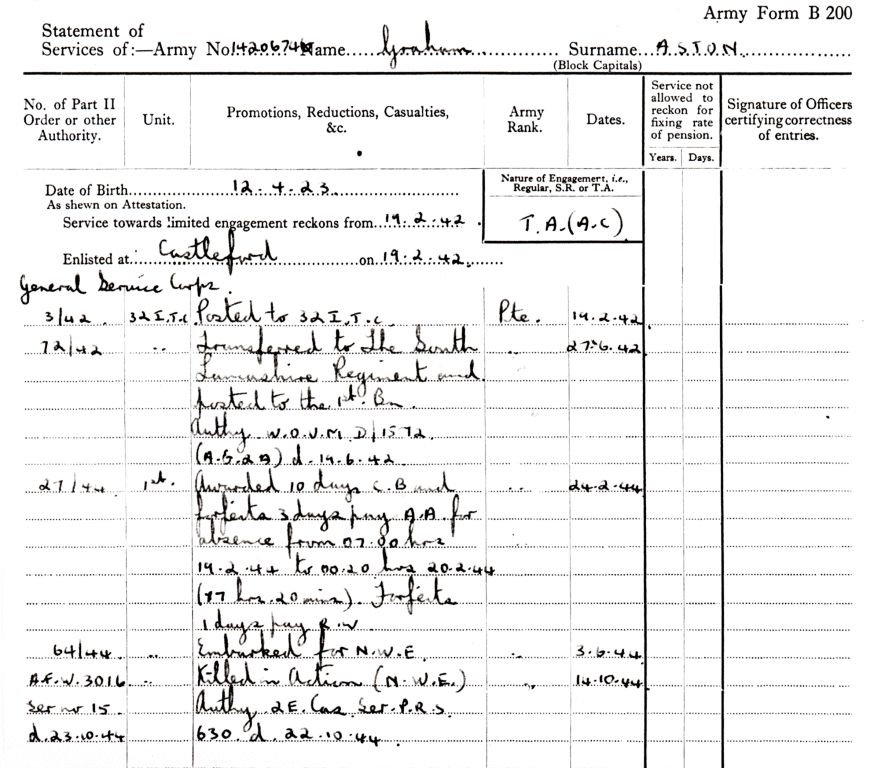Graham Aston
Date of birth: 4.1923
Date of death: 14.10.1944
Area: Castleford
Regiment: South Lancashire
Family information: Son of Edward and Mary E Aston
Rank: Private
Service number: 14206746
Family Life
This is the story of my cousin once removed, Graham Aston, as far as I can tell it.
Sadly I never knew him. When he enlisted in the army I was only about 9-10 months old and nearly 6 years old when he was killed near the end of the war.
I can never remember his parents, my Uncle Ted and Aunty Mary, talking about Graham. Being an only son, the news of his death must have devastated them. Perhaps not talking about him was the only way they could cope with their grief and the pain it caused them. Not being able to have a funeral or be present at his burial must have made it even more difficult for them.
I learned about Graham from my dad who was his cousin and 3 years older. I know it upset my dad very much. The fact that Graham was killed so near the end of the war when he was only 21 years old, never returning home, never having the chance to have children. I sometimes felt Dad had a twinge of guilt because he himself was never “called up”.
Graham was born 12th April 1923 at 3, Cross Albert St, Castleford. (The street is now demolished. It stood where the Carlton Lanes Shopping Centre is now.) His parents were Ted and Mary Aston. Ted was a coal miner. Six years after Graham was born his parents had a daughter, Mavis and some years later another daughter, Doreen, was born with Downes Syndrome.
Sometime during Albert’s childhood, the family moved to Whitwood Mere, the ‘Potteries’ area of Castleford and then moved again a short distance to Three Lane Ends.
Albert went to Whitwood Mere Junior School and then to Three Lane Ends Senior School where his cousin George Aston, my father, was also a pupil.
On leaving school, Graham went to work at Clokies Pottery Co., a short distance from his home. He enlisted for the army in 1942, aged 19.
Unfortunately there is no surviving photograph of Graham and his sister, Mavis, is unable to recall what he looked like, the colour of his eyes or hair, nor his voice. I found this very upsetting. Army records describe him as 5ft 3ins in height with fair hair and blue eyes. His weight was 11st 2lbs and medically he was A1.
In March 1946, Graham’s family received a letter from the War Office informing them that he was now buried in the Mierlo War Cemetery near Eindhoven. The following year the War Office forwarded a letter from Mr Riek Derison of Helmond, Holland who told them he was caring for their son’s grave. The letter states that Mr Derison will care for the grave with “great gratitude” and concludes:”If you will come to Helmond, to visit the cemetery of Mierlo, you will always find a place to sleep and dinner. You are very welcome in our house.”
 Graham Aston's service record
Graham Aston's service record

